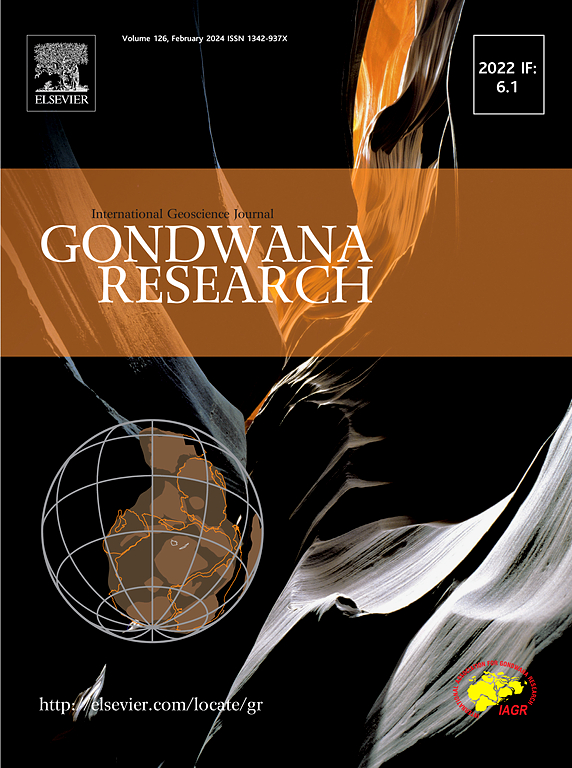Reconstructing the trophic structure of Maastrichtian elasmobranch communities in Morocco using calcium isotopes
IF 7.2
1区 地球科学
Q1 GEOSCIENCES, MULTIDISCIPLINARY
引用次数: 0
Abstract
The diversification of elasmobranchs through time is accompanied by an incredible diversity of feeding ecologies reflecting every trophic position and placing elasmobranchs as cornerstone organisms of the marine food webs. Quantifying their trophic ecology in the fossil record brings precious insights about their successes and the evolution of trophic structure through deep time. Here we quantitatively describe the trophic organization of a rich Maastrichtian elasmobranch assemblage from Morocco presenting taxa from all the trophic levels using the calcium isotopes of their teeth. We highlight overall similarities with modern trophic food webs presenting batomorphs at the lower trophic levels including the first estimate of diet in the extinct suborder of sclerorhynchid and large selachimorphs as apex predators. Moreover, δ44/42Ca values in Squalicorax pristodontus reveal peculiar feeding behavior underlining that apex elasmobranchs were already divided into two categories including large piscivorous predators and tetrapod feeders.

利用钙同位素重建摩洛哥马斯特里赫特蛛形科群落的营养结构
随着时间的推移,弹性鳃的多样化伴随着令人难以置信的摄食生态的多样性,反映了每一个营养位置,并将弹性鳃作为海洋食物网的基石生物。在化石记录中量化它们的营养生态,为它们的成功和营养结构的进化提供了宝贵的见解。在这里,我们用牙齿的钙同位素定量地描述了摩洛哥丰富的马斯特里赫特蓝齿纲组合的营养组织,展示了来自所有营养水平的分类群。我们强调了与现代营养食物网的总体相似性,这些食物网呈现出较低营养水平的蝙蝠形动物,包括对已灭绝的硬喙亚目和大型selachimorphs作为顶端捕食者的饮食的首次估计。此外,原始角鲨的δ44/42Ca值揭示了其独特的摄食行为,表明其已被划分为大型鱼食性捕食者和四足捕食者两类。
本文章由计算机程序翻译,如有差异,请以英文原文为准。
求助全文
约1分钟内获得全文
求助全文
来源期刊

Gondwana Research
地学-地球科学综合
CiteScore
12.90
自引率
6.60%
发文量
298
审稿时长
65 days
期刊介绍:
Gondwana Research (GR) is an International Journal aimed to promote high quality research publications on all topics related to solid Earth, particularly with reference to the origin and evolution of continents, continental assemblies and their resources. GR is an "all earth science" journal with no restrictions on geological time, terrane or theme and covers a wide spectrum of topics in geosciences such as geology, geomorphology, palaeontology, structure, petrology, geochemistry, stable isotopes, geochronology, economic geology, exploration geology, engineering geology, geophysics, and environmental geology among other themes, and provides an appropriate forum to integrate studies from different disciplines and different terrains. In addition to regular articles and thematic issues, the journal invites high profile state-of-the-art reviews on thrust area topics for its column, ''GR FOCUS''. Focus articles include short biographies and photographs of the authors. Short articles (within ten printed pages) for rapid publication reporting important discoveries or innovative models of global interest will be considered under the category ''GR LETTERS''.
 求助内容:
求助内容: 应助结果提醒方式:
应助结果提醒方式:


